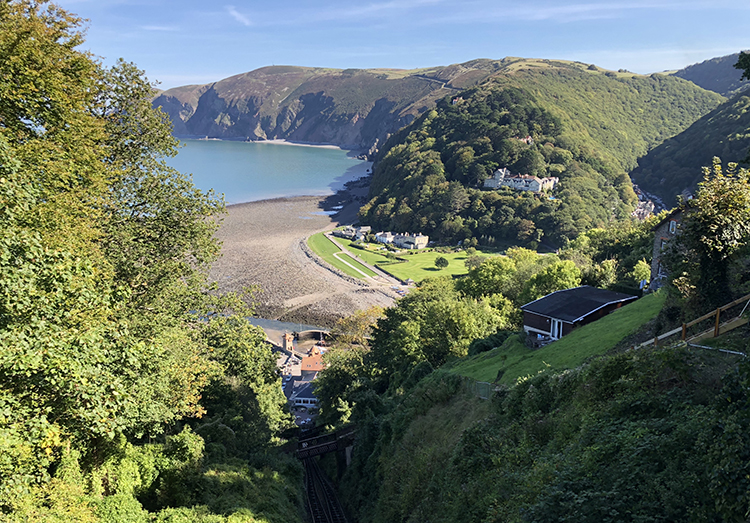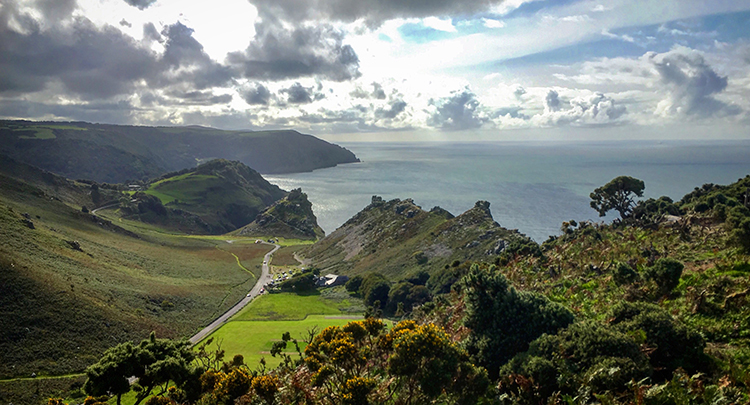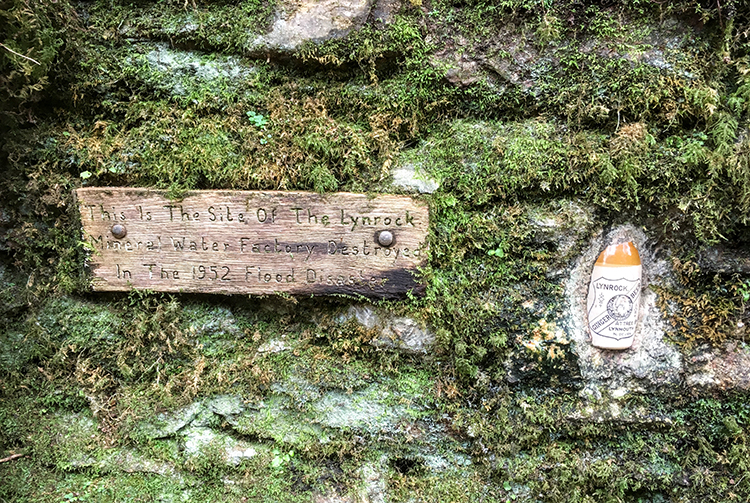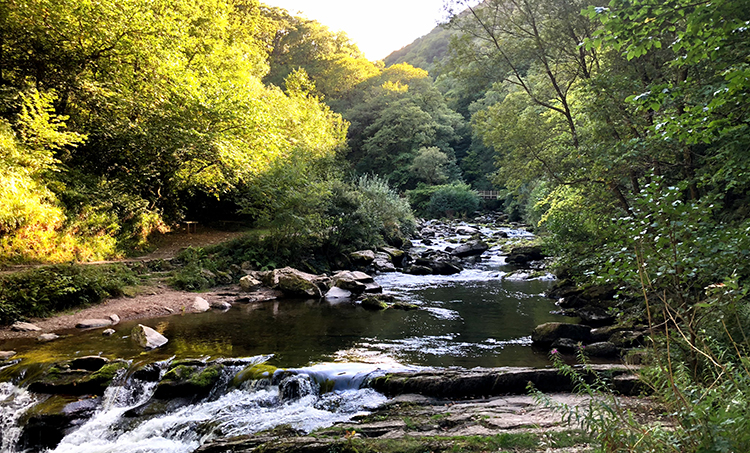You are here > Discover North Devon > Itineraries > Lynton & Lynmouth Rocks & Rivers Walking Itinerary
To provide you with the best experience, cookies are used on this site. Find out more here.

To provide you with the best experience, cookies are used on this site. Find out more here.

Explore North Devon
Stay
What's On in North Devon

Welcome to the Itinerary Planner. Use this tool to build your own journey or choose from an exciting range of specially selected tours.
To build your own Itinerary, click  to add an item to your Itinerary basket.
to add an item to your Itinerary basket.

You are here > Discover North Devon > Itineraries > Lynton & Lynmouth Rocks & Rivers Walking Itinerary

Lynton & Lynmouth are the walking capital of Exmoor and it’s easy to see why. The coastline is dramatic, sheer and rugged, boasting some of the highest cliffs in England. The lush green countryside rises and falls as the vast moors give way to deep wooded valleys.
There are hundreds of paths and trails just waiting to be explored. Many long cross-country walks converge in Lynmouth, such as the South West Coastal Path, the Two Moors Way and the Coleridge Way. For a short stay in Lynton & Lynmouth we’ve prepared a delightful 2-day itinerary that blends both coast and countryside walking. Although this is a relatively easy itinerary, it’s not particularly long in miles but still involves a lot of steep walks.

Day 1
Let’s start by walking to Lynton’s most iconic attraction, the Valley of Rocks.
Starting in Lynton follow the road North Walk or starting in Lynmouth you can begin your walk on the ‘zig zag’ path, leading to North Walk. This walk to the Valley of Rocks is part of the South West Coastal Path is the most dramatic. The Exmoor National Park boasts some of the steepest sea cliffs in England.
Once in the Valley of Rocks take some time to explore the fascinating rock structures or just sit a relax and take in the views of one of Exmoor’s finest landscapes. If you’re feeling adventurous then carefully ascend to the top of Castle Rock, the feature rock formation of the valley.
If you’re feeling peckish, there’s a great seasonal café which makes a perfect place stop for refreshments and snacks. Further along the road is a public toilet opposite the cricket pitch should you need to stop.
Time for some elevation? Follow the road back towards Lynton, and just after the Cricket Pitch, begin to climb up Hollerday Hill on the left. As you ascend Hollerday Hill along the narrow goat path, you will see the Valley of Rocks unfold. At the top of the hill, head to the Iron Age Fort site, this will offer you some incredible views of the valley, the Bristol Channel and beyond.
Begin your descent from Hollerday Hill by walking through the Iron Age Fort site, following signs for Hollerday House and Lynton. Hollerday House is no longer there, only the site, but it’s quite fascinating to see. This is a short walk back to Lynton through the woodland of Hollerday Hill, take some time to explore it’s a lovely walk. Eventually this will bring you to the Lynton Town Hall, or a slightly longer walk via Snowball bringing you to the old Lynton Cemetery.
Once back in Lynton you can take some well-earned rest in one of the great cafes, or amble around the local shops. Explore the Lyn Valley Art and Crafts Centre for some locally made gifts. Still feeling energetic? Take a ride on the Lynton & Lynmouth Cliff Railway to Lynmouth and explore the quaint Victorian harbour, or head to the rocky Eastern Beach and listen to the lapping waves.

Day 2
After an exhilarating Day 1, let’s stay closer to ground level and swap the sheerness of the Exmoor coastline for an invigorating river walk to Watersmeet, one of Julia Bradbury’s favourite walks.
Begin your walk in Lynmouth, if you’re staying in Lynton then you can walk via the ‘zig zag’ path, off North Walk, or enjoy a ride on the Lynton & Lynmouth Cliff Railway.
Walk along Lynmouth’s picturesque harbour, towards Tors Road where you will begin your walk with the river on your right-hand side. Follow the cascading East Lyn River, past waterfalls and rock pools under the leafy canopy of the Watersmeet valley.
Continue walking until you reach the first bridge then cross the river to walk past the historic site of the Lynrock Mineral factory. Look out for the old bottle immortalised in the wall of the valley. This factory was unfortunately washed away by the great flood of 1952. If you would like to know more about this devastating flood head to the Lynmouth Flood Memorial. Here you can see original footage of the aftermath, together with a model of Lynmouth before that disastrous event.

Continue walking along this river walk, past Myrtleberry, towards the beautiful Watersmeet House, a National Trust property. Here you can sit and enjoy refreshments whilst listening the sounds of two great rivers crashing together before heading out to the Bristol Channel. At this point you could choose to extend your walk to either Hillsford Bridge or Rockford, adding a few more kilometres to your adventure. The Rockford part of the walk is circular. Cross over the river at the first bridge along your walk, just before the village. This will bring you back to Watersmeet on the opposite river bank. It really is a beautiful extension to your walk.
Time to head back to Lynmouth? Either walk back the way you arrived or choose the woodland walk on the same side as Watersmeet. The woodland walk is much higher than the river and offers a very different perspective. Look out for the Money Tree – make a wish.
On arrival back in Lynmouth, you are free to explore more of the beautiful towns. If you’re staying in Lynton you can return via the Cliff Railway, or walk up the ‘zig zag’ path which crosses over the Cliff Railway and offers great views of Lynmouth.
© Visit Devon Community Interest Company